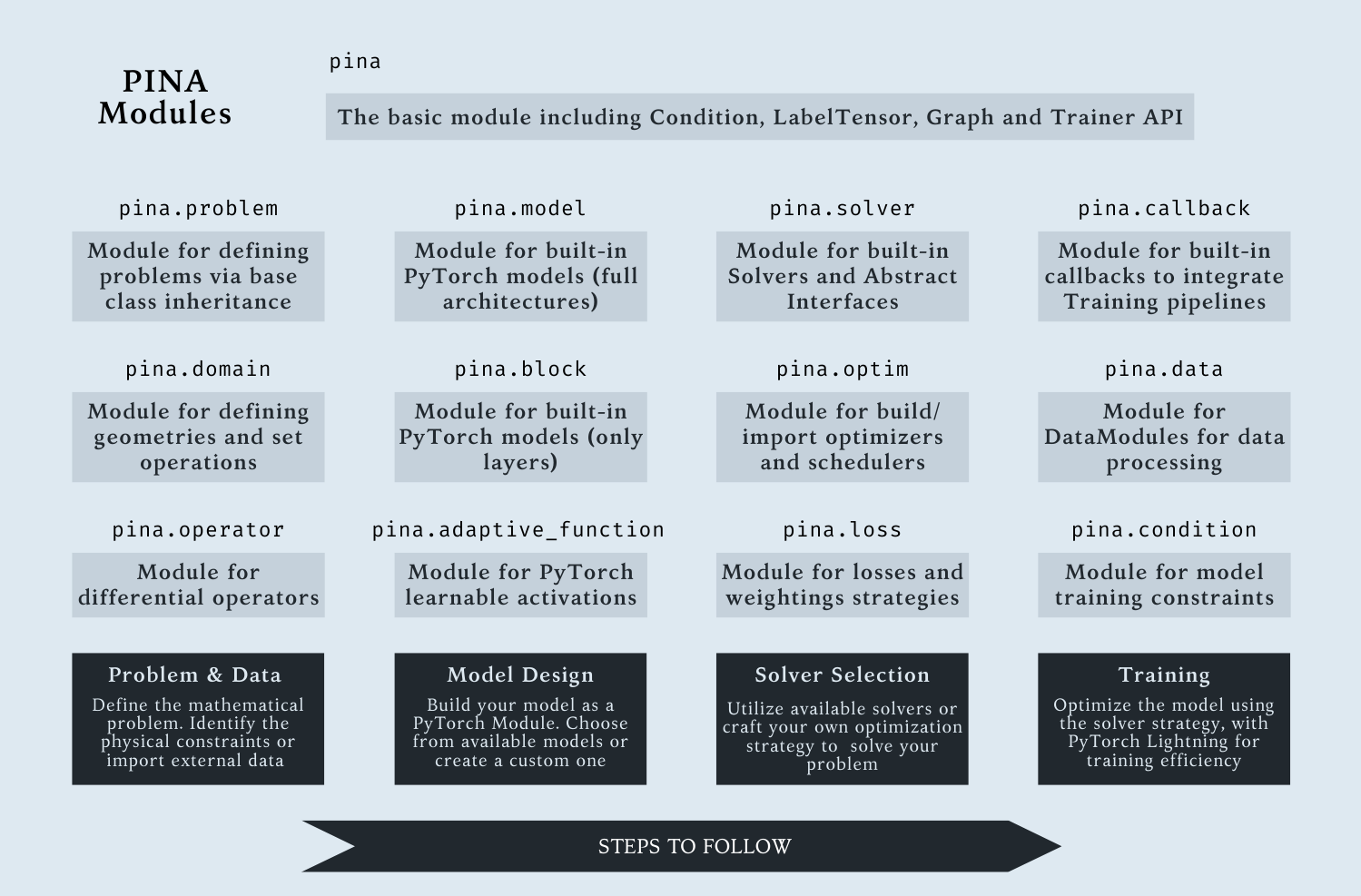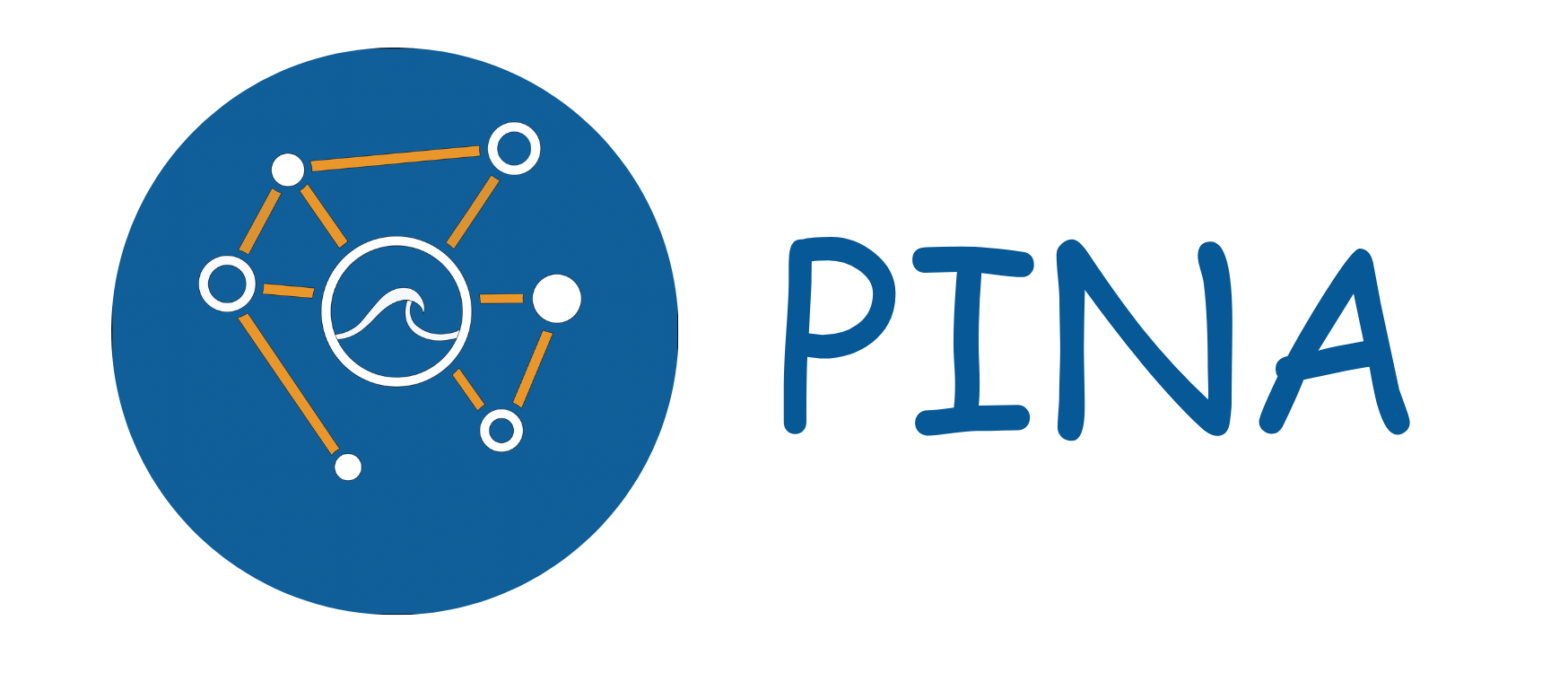Code Documentation#
Welcome to PINA documentation! Here you can find the modules of the package divided in different sections. The high-level structure of the package is depicted in our API.

The pipeline to solve differential equations with PINA follows just five steps:
Define the Problems the user aim to solve
Generate data using built in Geometrical Domains, or load high level simulation results as LabelTensor
Choose or build one or more Models to solve the problem
Choose a solver across PINA available Solvers, or build one using the SolverInterface
Train the model with the PINA Trainer, enhance the train with Callbacks
